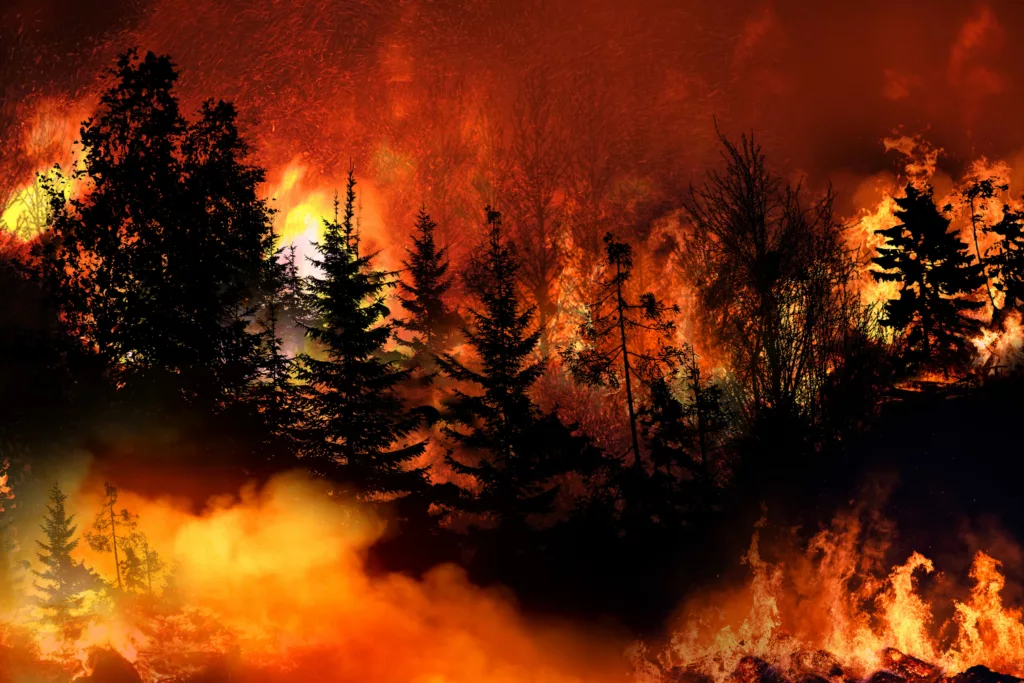In California, abundant rain from earlier in the year has helped delay the wildfire season, but it has also produced vegetation that has since dried and is expected to burn. Officials are warning that wildfires will follow. Already, California has experienced 3,370 wildfires this year, with more than 20,000 acres burned.
As more wildfires will follow, business owners face a particularly tricky summer season. Many top insurance companies have withdrawn from the Californian market, leaving people without disaster relief in an area prone to increasingly damaging wildfires. With the property insurance market hardening, owners should consider parametric insurance as a suitable alternative to traditional insurance.
Why are insurance companies withdrawing from California?
Three major insurance companies have announced that they are stopping writing new policies in California:
- State Farm: The insurance giant said it made the decision because of “historic increases in construction costs outpacing inflation, rapidly growing catastrophe exposure, and a challenging reinsurance market.” The company stopped accepting new applications as of May 27.
- Allstate: Similar to State Farm, Allstate announced it would pause new personal and commercial insurance policies. The goal is to protect current customers and ensure they can receive payouts in the case of wildfires.
- Liberty Mutual: Having pulled back from the Californian real estate insurance market in recent years, Liberty Mutual has made a “difficult but necessary step to reduce overall exposure to wildfires.”
The lack of new insurance policies only exacerbates existing problems around coverage becoming more expensive and harder to come by for Californians. For instance, State Farm is the state’s biggest provider of personal and commercial real estate insurance, and property owners are left vulnerable without adequate coverage during the wildfire season.
Read more: The Effects of Inflation on the Insurance Industry
Why are the wildfires more severe in California?
Scientists and the Californian government credit the high-intensity wildfire seasons to the climate crisis. In fact, 13 of the state’s 20 largest recorded fires burned in the last decade, and wildfires consumed five times more area between 1996 and 2021 than in the 25 years prior.
Simply put, the environment has become warmer and drier in the last ten years, leading to extreme weather and more frequent, destructive wildfires in California.
What are the alternatives to traditional insurance coverage?
Despite the rapid and significant changes to the insurance market in California, extreme wildfire risk plagues commercial property owners, moreso than any other state. Without access to traditional insurance companies, those in need of protection are turning to the state pool (the California Fair Access to Insurance Requirements Plan), which provides basic fire insurance when traditional insurance companies cannot.
If your business is in a high-risk wildfire area in California, a great option is also parametric insurance. As the traditional property insurance market hardens, this type of insurance can provide additional coverage bolstered by increasingly powerful technology.
What is parametric insurance?
Parametric insurance protects against a specific event by paying a set amount based on the event’s severity. For instance, if a parametric insurance policy is triggered by an event (such as a magnitude 5.0 or greater earthquake). Then, it would pay out a set amount ($100,000, for example).
For disaster insurance, this allows payouts to occur much faster, as policyholders don’t have to deal with the claims adjustment process. Payments can be made in weeks instead of months or years.
How does it work?
Parametric insurance depends on data sources and satellite imagery to decide its coverage triggers. As this technology has only improved in recent years, parametric insurance has seen broader uptake and growing user confidence.
At McGowan Wholesale, Parametric Wildfire Insurance is available to provide coverage for any economic loss due to wildfires, such as:
- Damage to signs
- Direct and indirect financial losses
- Damage to the roof
- Damage to the siding
- Damage to landscapes
The coverage is determined using satellite imagery and burnt area data. Payouts are binary and 100% payable once the burn area has reached the radius around the property. The territory covered is not just applicable to California; parametric wildfire insurance from McGowan Risk covers all 50 States.
Learn about other types of parametric insurance for disasters such as hurricanes and tornadoes here.
Contact the specialists at McGowan Wholesale to protect you against weather-related disasters.





